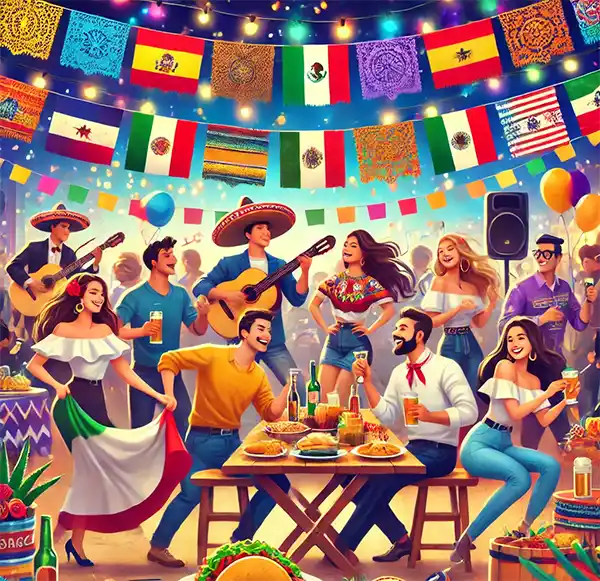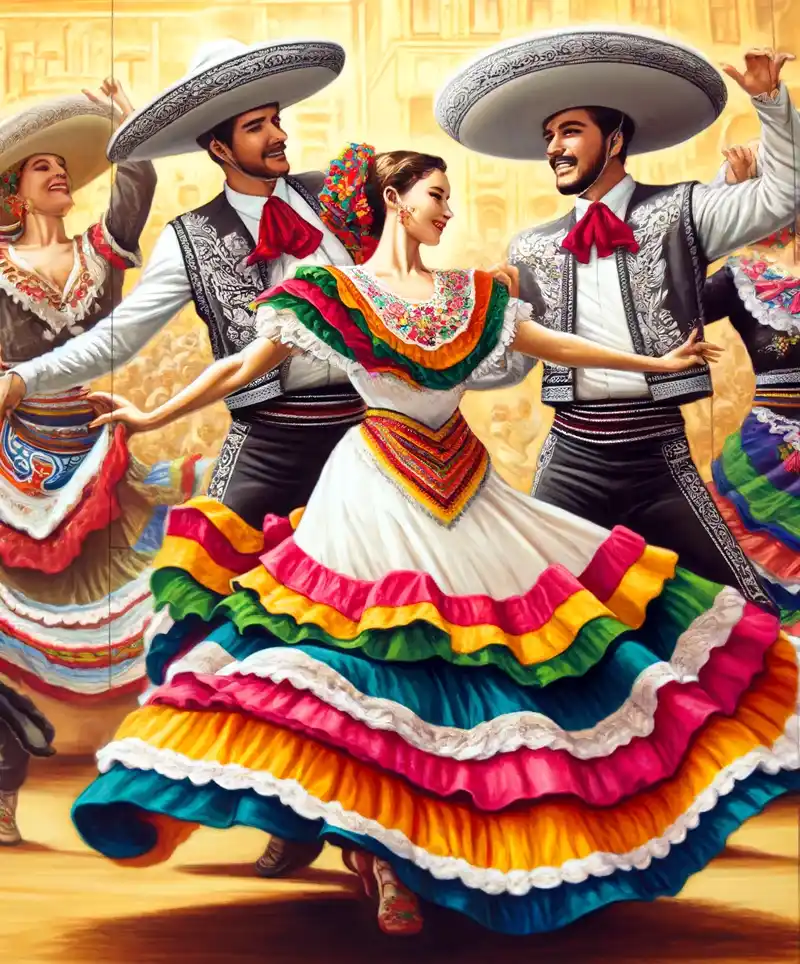A Celebration of Culture, Contributions, and Flavor
From September 15 to October 15 every year, the United States celebrates National Hispanic Heritage Month. It’s a time to recognize and honor the rich histories, cultures, and contributions of Americans whose ancestors came from Spain, Mexico, the Caribbean, Central, and South America. It’s also an excellent excuse to eat tamales, dance salsa, and pretend you know more Spanish than “¿Dónde está el baño?” (Where’s the bathroom?).
How It All Began
The roots of National Hispanic Heritage Month stretch back to 1968 when President Lyndon B. Johnson first established Hispanic Heritage Week. Yes, you read that right—a single week to celebrate the profound cultural contributions of millions of people! It’s like trying to sum up centuries of vibrant history in one short paragraph. Realizing this might not cut it, President Ronald Reagan stepped in and said, “Let’s make it a full month!” And so, in 1988, Hispanic Heritage Month was born, giving the celebration the time it truly deserved.
But why does it start on September 15 and not, say, at the beginning of the month like most normal holidays? The answer lies in history. September 15 marks the anniversary of independence for five Latin American countries—Costa Rica, El Salvador, Guatemala, Honduras, and Nicaragua. It’s like the opening act of a month-long party. Not to be left out, Mexico celebrates its independence on September 16, and Chile follows on September 18. With so many countries lighting up the calendar, September 15 seemed like the perfect launchpad for the celebration.
And it’s not just about independence. The month-long period allows for a full appreciation of the rich and diverse contributions of the Hispanic community, past and present. From arts and sciences to politics and culture, the extended celebration gives everyone time to soak in the beauty and significance of Hispanic heritage—something that a mere week couldn’t quite capture.
The Heart of the Celebration
National Hispanic Heritage Month is about much more than colorful parades, spicy food, and rhythmic music (though those are highly encouraged). It’s about recognizing the vital contributions that Hispanic Americans have made to the country in fields like politics, science, the arts, and beyond. From civil rights leaders like César Chávez and Dolores Huerta, to trailblazing figures like Supreme Court Justice Sonia Sotomayor, the impact of Hispanic Americans is woven into the very fabric of the nation.
 In the world of entertainment, Hispanic artists like Rita Moreno, Lin-Manuel Miranda, and Shakira have dazzled audiences around the globe, proving that rhythm, creativity, and the ability to make people get up and dance are international gifts. Meanwhile, Hispanic athletes like Roberto Clemente and Lionel Messi (though Argentine by birth) have shown that excellence on the field knows no boundaries. Hispanic Heritage Month serves as a reminder that whether it’s a home run or a high note, the Hispanic community is hitting all the right marks.
In the world of entertainment, Hispanic artists like Rita Moreno, Lin-Manuel Miranda, and Shakira have dazzled audiences around the globe, proving that rhythm, creativity, and the ability to make people get up and dance are international gifts. Meanwhile, Hispanic athletes like Roberto Clemente and Lionel Messi (though Argentine by birth) have shown that excellence on the field knows no boundaries. Hispanic Heritage Month serves as a reminder that whether it’s a home run or a high note, the Hispanic community is hitting all the right marks.
A Kaleidoscope of Cultures
One of the most beautiful aspects of Hispanic Heritage Month is the diversity it showcases. The term “Hispanic” itself encompasses people from over 20 countries, each with its own unique customs, dialects, foods, and traditions. This means that what you’re celebrating during the month might vary depending on where you’re from—or where your taste buds lead you!
For example, in Mexico, you might celebrate with an abundance of mole and mariachis, while Puerto Ricans might be breaking out the pasteles and bomba rhythms. Meanwhile, Cubans might treat you to a savory plate of ropa vieja and the contagious beats of salsa. No matter where you go, you’ll encounter vibrant colors, rich traditions, and enough delicious food to keep you in a happy food coma for days.
And while we’re on the subject of food, let’s be clear: Hispanic cuisine is not “just tacos.” (Though we fully acknowledge tacos are an art form in themselves.) Hispanic food spans from arepas in Venezuela to pupusas in El Salvador and ceviche in Peru. It’s a culinary adventure that could easily take you around the globe without ever leaving your kitchen—though you might need a few extra napkins for the journey.
How to Celebrate National Hispanic Heritage Month
Wondering how to join in on the festivities? First, a little education goes a long way. Spend some time learning about the historical and modern-day contributions of Hispanic Americans to society. Whether it’s reading about Latina astronaut Ellen Ochoa’s achievements in space or exploring the life and work of Mexican artist Frida Kahlo, there’s no shortage of inspiration to be found.
And while you're expanding your knowledge, why not expand your cultural horizons too? Try your hand at cooking a traditional dish from a Hispanic country you’ve never explored before, attend a local cultural event or concert, or, if you’re feeling extra adventurous, take a dance class—salsa, bachata, or even tango! Just make sure your dance moves are ready, because it’s nearly impossible to sit still once the music starts.
Plus, there’s no shortage of content in TV, movies, and literature that highlights Hispanic culture. From watching the beloved telenovelas to diving into modern Latino literature, you can immerse yourself in the richness of the language, stories, and art that make the Hispanic community so unique.
A Bilingual Nation in Progress
Hispanic Heritage Month is also a reminder of how intertwined Spanish and English have become in everyday American life. You don’t have to be fluent in Spanish to know that “¡Hola!” and “Gracias!” can go a long way in connecting with people. Even if you only know a few phrases, chances are you’ve probably picked up more Spanish than you realize—especially if you’ve spent any time watching "Dora the Explorer."
The influence of the Spanish language is everywhere, from bilingual signs in cities to Spanish-speaking TV channels to the explosion of Latin music that’s topped the global charts. (Looking at you, "Despacito.") As the fastest-growing minority group in the U.S., Hispanic Americans are shaping the future of the country, bringing with them their values, traditions, and, of course, their incredible knack for creating catchy rhythms.
National Hispanic Heritage Month is a time to honor the profound influence that Hispanic culture and people have had on the United States and the world. Whether it’s the delicious foods, the lively music, the passionate activism, or the sheer diversity of cultures that make up the Hispanic community, this month serves as a reminder that Hispanic heritage is an integral part of what makes America, well, America.
So, take this month to celebrate with friends, family, and your neighbors—whether you’re feasting on tamales, learning some Spanish, or dancing the night away to the irresistible beats of reggaeton. And when it’s all over, remember that Hispanic heritage isn’t just a month-long event—it’s a vibrant, ongoing thread that runs through the tapestry of American life, 365 days a year.
Please Share our Content






 In the world of entertainment, Hispanic artists like Rita Moreno, Lin-Manuel Miranda, and Shakira have dazzled audiences around the globe, proving that rhythm, creativity, and the ability to make people get up and dance are international gifts. Meanwhile, Hispanic athletes like Roberto Clemente and Lionel Messi (though Argentine by birth) have shown that excellence on the field knows no boundaries. Hispanic Heritage Month serves as a reminder that whether it’s a home run or a high note, the Hispanic community is hitting all the right marks.
In the world of entertainment, Hispanic artists like Rita Moreno, Lin-Manuel Miranda, and Shakira have dazzled audiences around the globe, proving that rhythm, creativity, and the ability to make people get up and dance are international gifts. Meanwhile, Hispanic athletes like Roberto Clemente and Lionel Messi (though Argentine by birth) have shown that excellence on the field knows no boundaries. Hispanic Heritage Month serves as a reminder that whether it’s a home run or a high note, the Hispanic community is hitting all the right marks.








 "Sláinte!" is a traditional Irish expression used as a toast, equivalent to "Cheers!" in English.
"Sláinte!" is a traditional Irish expression used as a toast, equivalent to "Cheers!" in English.